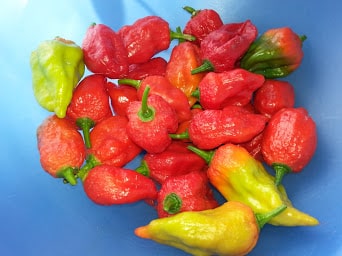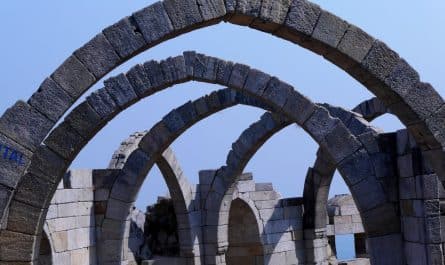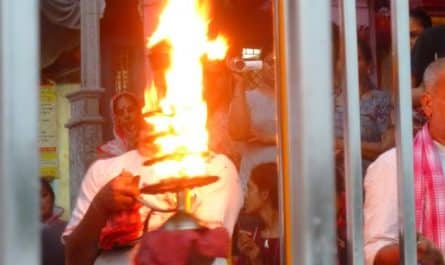Let me begin with some disclaimers:
- I have never been to a ‘national park’ before this (unless you count a brief visit to Periyar when I was a child)
2 I have never thought of going on a safari because I didn’t really think it was ‘my kind of thing’
- I have never been particularly interested in wildlife and have never really stopped to admire a bird or tree or creature.
Having said this, I have just returned from an absolutely fantastic three-day jungle experience. The complete jungle immersion started on the drive from Bhopal to the Forsyth Lodge when we suddenly realised we had no mobile network. Our cheerful driver happily informed us that there is no mobile network in the hotel or in the forest and definitely no hope of wifi or any form of internet communication. And no, no TV either. BSNL, a mobile operator nobody I know uses, does have a weak signal in a few parts of the Lodge but we, of course, did not have a BSNL connection. For perhaps the first time in my life, I spent 3 days completely cut off from the rest of the world. Quite an unnerving feeling at first, but after a bit fairly liberating.
By way of background, the relatively less known and low key Satpura National Park is in the district Hoshangabad of Madhya Pradesh and lies at the foothills of Panchmarhi. It gets its name from the Satpura hill ranges (Mahadeo hills). The Park has a unique central highland ecosystem and an extremely rugged terrain. As you traverse through the Park you will see high sandstone peaks, narrow gorges, ravines and dense forest. The Park covers an area of 524 km2 of which just 4% is open to the public.
The nearest town to the national park is Panchmarhi, the nearest railhead is Piparia 55 kilometres away and the state capital Bhopal is 210 kilometres away.
We were booked at the charming Forsyth Lodge, a place I will without hesitation recommend to everybody. While not luxurious, it falls under the category that can be called rustic comfort. The accommodation is 12 individual cottages that are spread around the main Lodge building and though extremely charming with a sweet sit-out with planters chairs, we hardly spent any time in our cottage and only used it to sleep and bathe.
Rishi, the gracious, unflappable manager of Forsyth Lodge introduced us to the rest of the guests and to the resident naturalists. Naturalists are essentially people who are experts in botany or zoology, especially in the field. We were told that a naturalist would accompany us on every safari or outing.
Within 10 minutes of our checking in, one of the resident naturalists, Surya, offered to take us on a walk around the property. What an absolute delight. In that 1 hour, I saw innumerable butterflies and dragonflies, learned to recognize the sound and sight of several birds and was introduced to the world of spiders. Surya’s enthusiasm is to be seen to be believed. He is passionate, knowledgeable and so eager for you to see and appreciate every bee, bird and tree. The enthusiasm was infectious and soon we were asking questions and looking around with eager eyes and straining to hear the calls of different birds. What an absolutely charming start.
|
Jezebel Butterfly |
| Bull Frog |
Back at the Lodge, we met the second naturalist, David Raju. David’s reputation as “one of India’s great young and independent, naturalists” preceded him and from the brief time we spent with him, he more than lived up to it. An absolute mine of information and knowledge with a well-honed instinct to spot even the most elusive wildlife. Soon after lunch, we set off with David for our first safari.
The Lodge is a 10-minute drive from the ticket booth to gain access to the Satpura National Park. The Denwa river separates the mainland from the core Satpura Reserve and the only way to enter the Park is by crossing the river in a speed boat. Once on the other side, there are a total of 12 jeeps that can be used to see the Park. Each jeep comes with a driver and a forest guide or spotter and if you are lucky enough to stay at Forsyth, you also have your own dedicated naturalist. Because the number of jeeps in this National Park is so limited, you can drive around for hours without encountering any other jeep or human. It’s just the jungle and you.
We were incredibly lucky with that first drive and sighted at very close quarters several sambar, peacocks, deer, a huge Malabar Pied Hornbill, a few majestic gaurs and an absolutely close encounter with a mama and baby bear who crossed the path less than 10 feet in front of our jeep. We watched closely as they ambled across and then to our delight, the mama bear began digging for termites while the baby bear rubbed his backside against a tree stump.
| Gaur |
| Sambar |
| Mama Sloth Bear |
| Mama and Baby Sloth Bear |
Early the next morning we set off for another jeep safari and the lovely Forsyth Lodge made it special by arranging a picnic breakfast deep in the forest on a pile of volcanic rock overhanging a stream. That afternoon we took a Boat Safari through the inlets and channels of water that run through and surround the Park. Perfect for sighting the many birds that make this ecosystem their home. As we drove back to the Lodge, another jeep with some guests was setting off for a Night Safari. Surya kindly invited us to hop on and we jumped at the chance. We drove in the buffer zone of Satpura and were treated to wonderful sightings of the Eagle Owl and a very close view of a civet. Surya flashed his strong flashlight at creatures and trees of interest, stopped to let us hear the sound of the forest and for brief periods turned off all lights to let us experience the complete blackness of the deep forest. Driving through the dense jungle in the pitch dark was an eerie, exciting and completely special experience.
Another early start had us set off on a Walking Safari with Surya. As the Forsyth Lodge website lyrically says, “There’s walking, and then there is learning to place your feet according to the undulations of the landscape, the minor shifts in the undergrowth, and the many variations of mud the jungle can offer. Not to speak of the rather surprising racket that your feet can make across fallen teak leaves.” The Satpura Reserve is apparently the only protected forest in India that permits Walking Safaris. The walk was for about 4 hours and in that time we tracked bear paw prints, saw innumerable langurs and sambar, listened for jungle alarm calls to see if we were close to any of the large cats (leopard or tiger), saw a giant dragonfly trapped in a spider web and learned about the evolution of spiders. I also learned to identify and avoid the dreaded Rainy Tree with its curved thorns that can rip your skin out. The Walking Safari is an absolutely must-do experience if you ever visit Satpura. The excitement of literally carving your way through the forest, not knowing what could be around the next bend and carefully examining so many creatures you would never see at such close range if you were in a jeep or on an elephant. I would do it again and again, in a heartbeat.
| Kingfisher |
| Ghost Tree |
Our last dawn at Satpura found us in canoes rowing down the Denwa and Sonbhadra rivers and their many inlets and tributaries to watch the sunrise, hear the birds wake up calls and chance upon 2 sambars swim across a stream right in front of our canoe. A sudden sighting of a large 14-foot crocodile was exciting enough for us to spend a half-hour tracking it and trying to get a closer look.
| Sunrise on the Denwa |
| Sambhars swimming across the Denwa River |
| Wire-tailed swallow |
| White-browed wagtail |
All in all, an absolutely fabulous jungle experience made special I believe by the wealth of information and boundless enthusiasm of the wonderful naturalists at Forsyth Lodge.
(This post is from 2013. I have been on many safaris since, but this remains special as it was my first)



